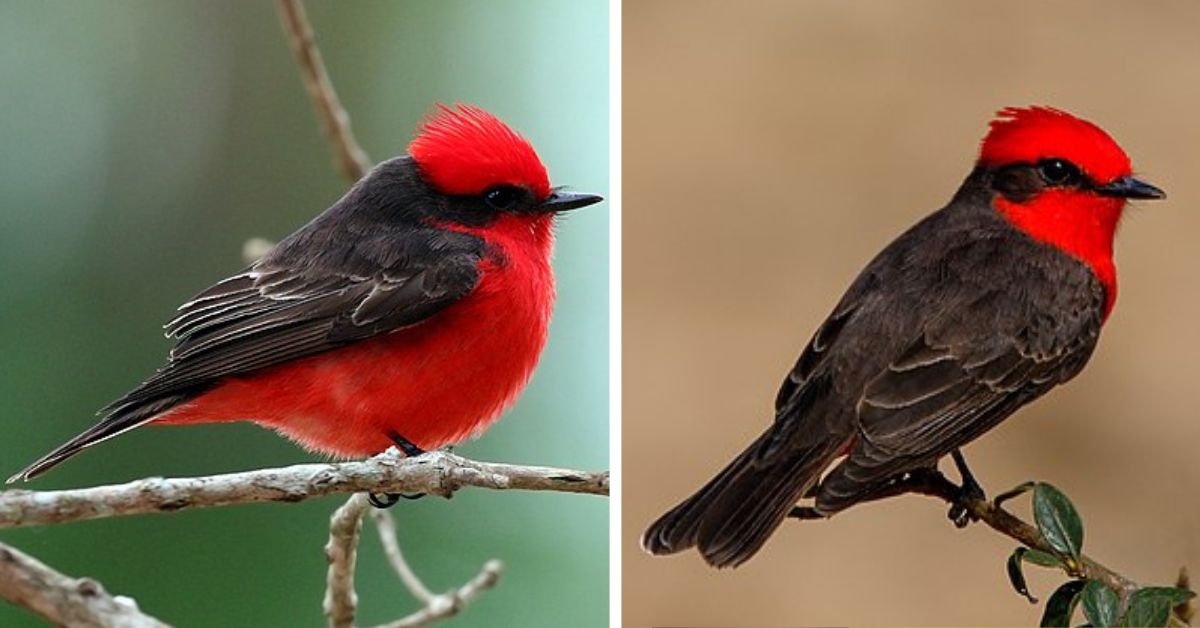A ‘Fire-Headed’ Feathered Ember, Flitting About In A Desert Landscape – Meet The Scarlet Flycatcher!

This bird’s genus name is Pyrocephalus, which translates to “fire-headed,” exactly what this bird is.
A bird colored in what can only be described as a brilliant flaming red, wearing a conspicuous mask around the eyes.
Meet the Scarlet Flycatcher

The Scarlet flycatcher is a close relative of the orange-colored vermilion flycatcher. Sometimes hard to tell apart, the Scarlet flycatcher has pointier wings. Males are colored a bright red on their bellies and crown, with darker upperparts and a mask around the eyes.

Females are pretty in their own way, a more subtle shade of brown, they sometimes have a salmon-colored blush to their bellies.

They are a common species of bird, found all the way from Central America into much of South America.
Related Reading:
Found in the extreme southwestern United States, through Mexico, south, right down into Argentina.

Preferring to be in open bushy areas, including woodland, the Scarlet flycatchers can be seen hunting down insects on the wing. Also quite often seen along the roadside, pausing to take a break on fenceposts.

A year-round resident of many central American country’s, the male will quite often bring gifts to his prospective mate during the breeding season. This usually comes in the form of a shiny insect he brings to her in his beak.

Widespread throughout their range the Scarlet flycatcher is not considered under any threat.
Watch a short video of the Scarlet flycatcher right here below:
A Bird More Likely To Be Heard Rather Than Seen, Despite Their Vibrant Glossy Violet Coats!
Please SHARE this article with all your bird-loving friends and family.






